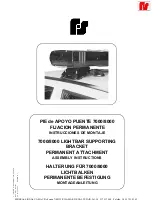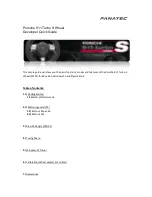
127
SAFETY
W
ARNING
LIGHTS AND MESSAGES
IN AN
EMERGENCY
SER
VICING
AND CARE
TECHNICAL
SPECIFICA
TIONS
INDEX
DASHBOARD AND CONTROLS
ST
AR
TING UP
AND DRIVING
Roof rack/ski rack
Remove the roof rack or the ski rack from
the roof after use. These accessories
lower aerodynamic penetration and ad-
versely affect consumption levels. When
transporting particularly large objects, use
a trailer if possible.
Electrical devices
Use electrical devices only for the amount
of time needed. Rear heated window, ad-
ditional headlights, windscreen wipers and
heater fan need a considerable amount of
energy, therefore increasing the require-
ment of current increases fuel consump-
tion (up to +25% in the urban cycle).
Climate control system
The climate control system is an additional
load which greatly affects the engine lead-
ing to higher consumption (on average up
to +20%). When the temperature outside
the car permits it, use the air vents where
possible.
Devices for aerodynamic control
The use of non-certified devices for aero-
dynamic control may adversely affect air
drag and consumption levels.
DRIVING STYLE
Starting
Do not warm up the engine at low or high
revs when the car is stationary; this causes
the engine to warm up more slowly,
thereby increasing fuel consumption and
emissions. It is therefore advisable to
move off immediately, slowly, avoiding
high speeds: in this way the engine will
warm up more quickly.
Unnecessary actions
Avoid accelerating when stopped at traf-
fic lights or before switching off the engine.
The latter action, like double-clutching, is
unnecessary and causes increase of con-
sumption and pollution.
Gear selection
As soon as the conditions of the traffic and
road allow, use a higher gear. Using a low
gear for faster acceleration will increase
consumption.
In the same way improper use of a high
gear increases consumption, emissions and
engine wear.
FUEL SAVING
Here are some useful tips to save fuel and
minimise harmful emissions of CO
2
and
other pollutants (nitric oxides, unburnt hy-
drocarbons, fine dusts etc…).
GENERAL CONSIDERATIONS
Car maintenance
Have checks and adjustments carried out
in accordance with the “Scheduled Ser-
vicing Plan”.
Tyres
Check the pressure of the tyres routinely
at an interval of no more than 4 weeks: if
the pressure is too low, consumption lev-
els increase as resistance to rolling is
higher.
Unnecessary loads
Do not travel with an overloaded boot.
The weight of the car (especially when dri-
ving in town) and its ride greatly affects
consumption and stability.
121-132 LINEA 1ed GB:121-132 LINEA 2ed it 5-11-2010 12:24 Pagina 127
Содержание Linea
Страница 222: ...page intentionally left blank 201 226 LINEA EUROPA 2ed GB 201 221 LINEA 1ed it 28 03 2012 16 29 Pagina 221 ...
Страница 226: ...N NO OT TE ES S 201 226 LINEA EUROPA 2ed GB 201 221 LINEA 1ed it 28 03 2012 16 29 Pagina 225 ...
Страница 227: ...201 226 LINEA EUROPA 2ed GB 201 221 LINEA 1ed it 28 03 2012 16 29 Pagina 226 ...
















































